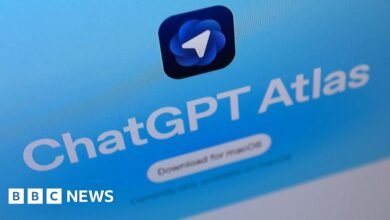OpenAI reinstates old ChatGPT models amid GPT-5 rollout issues

▼ Summary
– OpenAI CEO Sam Altman acknowledged issues with GPT-5’s rollout, including faulty model switching, poor performance, and user confusion, leading to partial reinstatement of older models like GPT-4o.
– A flawed automatic model router caused GPT-5 to underperform, prompting OpenAI to improve transparency and allow manual activation of “thinking mode” for complex tasks.
– Users reported GPT-5 making basic errors in math, logic, and coding, contradicting OpenAI’s internal benchmarks and raising concerns about real-world performance.
– Due to backlash, OpenAI will let ChatGPT Plus users continue using GPT-4o while gathering data on tradeoffs before deciding how long to support legacy models.
– The rocky GPT-5 launch, combined with API traffic surges and UX missteps, has created an opportunity for competitors to challenge OpenAI’s dominance in generative AI.
OpenAI has temporarily reinstated access to older ChatGPT models following unexpected challenges with its highly anticipated GPT-5 launch. The company’s CEO, Sam Altman, openly addressed the issues, citing technical glitches and performance inconsistencies that led to user frustration. This move highlights the complexities of deploying cutting-edge AI at scale while maintaining reliability.
During a recent Reddit AMA and social media posts, Altman acknowledged the rocky rollout, describing it as “more bumpy than we hoped.” Key problems included a malfunctioning model router system, which automatically directs queries to different GPT-5 variants, regular, mini, nano, and pro, with an optional “thinking” mode for complex tasks. When the autoswitcher failed, users reported GPT-5 performing below expectations, appearing “way dumber” than intended.
To address concerns, OpenAI is adjusting the model decision boundary and improving transparency around which version responds to queries. A forthcoming UI update will also allow manual activation of thinking mode. Most notably, ChatGPT Plus subscribers can now revert to GPT-4o, the previous default model, after widespread complaints about GPT-5’s erratic behavior. Altman emphasized that the company is evaluating how long to maintain legacy model access based on user feedback.
Despite OpenAI’s internal benchmarks touting GPT-5 as its most advanced model, real-world performance has sparked skepticism. Users shared examples of the model struggling with basic arithmetic, logic puzzles, and coding tasks. One viral post showed GPT-5 incorrectly asserting that 8.888 repeating equals 9, while others highlighted failures in algebra and debugging. Developers also noted inconsistencies, with some finding rival models like Anthropic’s Claude Opus 4.1 outperforming GPT-5 in certain programming challenges.
Security concerns have also surfaced, with researchers identifying vulnerabilities to prompt injection and obfuscated logic attacks unless additional safeguards are implemented.
The launch’s turbulence comes at a critical time for OpenAI, which dominates the generative AI space with 700 million weekly ChatGPT users. Altman revealed that API traffic doubled within 24 hours of GPT-5’s release, straining infrastructure. In response, OpenAI plans to increase rate limits for Plus users and refine backend systems.
The rocky debut has given competitors an opportunity to capitalize on user dissatisfaction, putting pressure on OpenAI to demonstrate GPT-5’s superiority beyond marketing claims. For now, the reinstatement of older models offers a temporary fix, but the company must quickly resolve performance gaps to retain trust in its flagship technology.
(Source: VentureBeat)





